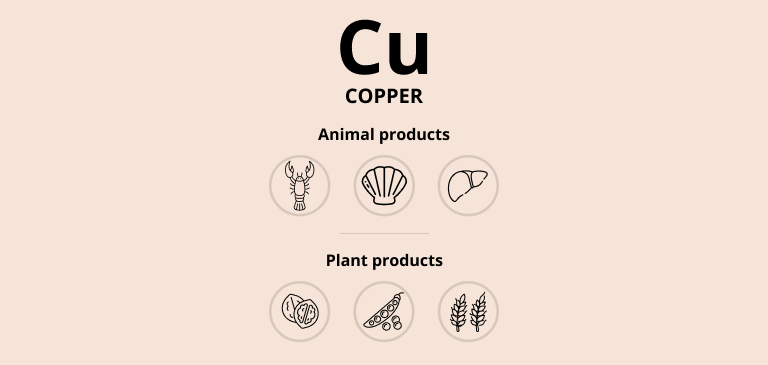Copper
Year of discovery: 9000 BC.
Copper is a component of many enzymes. Copper-dependent enzymes transport iron and transfer it to hemoglobin, the protein that carries oxygen in the blood. Copper-dependent enzymes release energy from glucose; provide natural defense against free radicals that damage the body; produce collagen (which is essential for skin and bones); deactivate histamine, which is responsible for allergic reactions; and break down dopamine into a neurotransmitter so that cells can "talk" to each other.
Main sources of copper
Seafood, nuts, whole grains, seeds and legumes, and offal.
Bioavailability of copper
Copper absorption depends on copper intake; absorption rates are about 50% at <1 mg/day (equivalent to the recommended intake for adult men). High iron intake may reduce copper absorption.
Risks associated with insufficient or excessive copper intake
Copper deficiency in healthy individuals is very rare. People at risk of copper deficiency are those with a rare genetic disease, Menke's disease, and children who are malnourished, have prolonged diarrhea or are fed only cow's milk. Copper is needed for iron transport. Therefore, clinical signs of copper deficiency include anemia. Other clinical signs include osteoporosis and other bone abnormalities, loss of pigmentation, neurological symptoms and growth disorders. Excessive intake of copper from food is unlikely.



